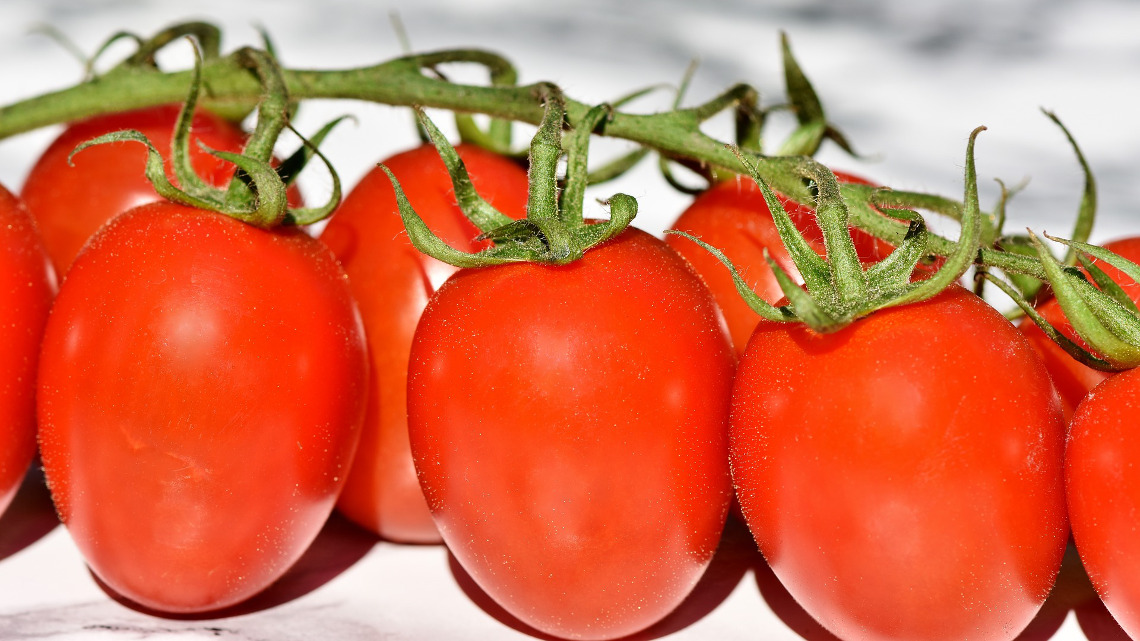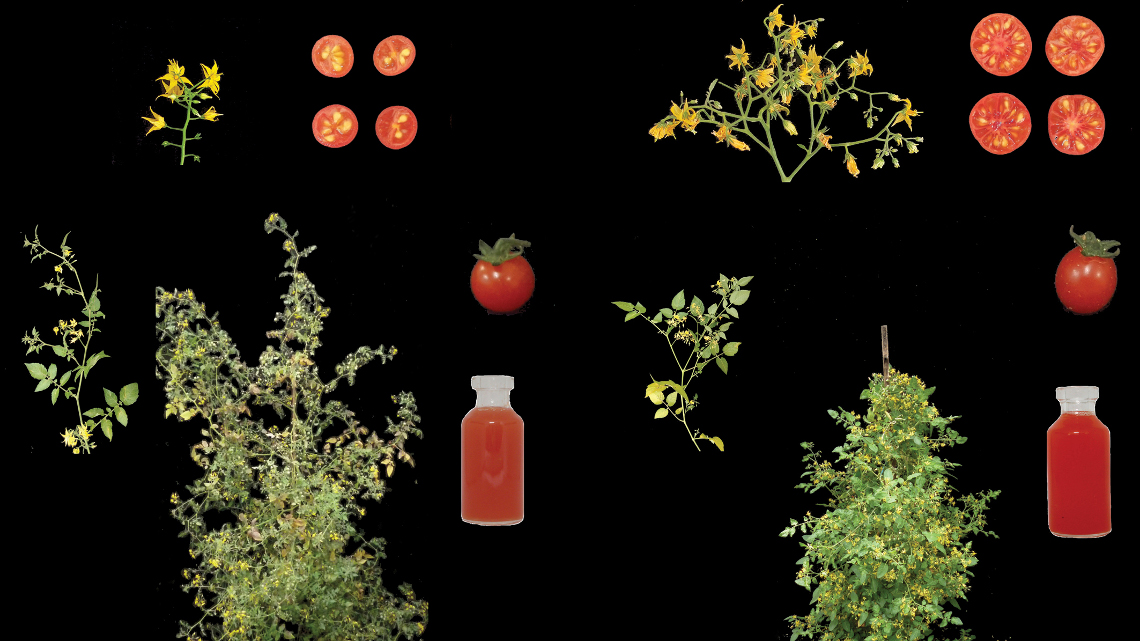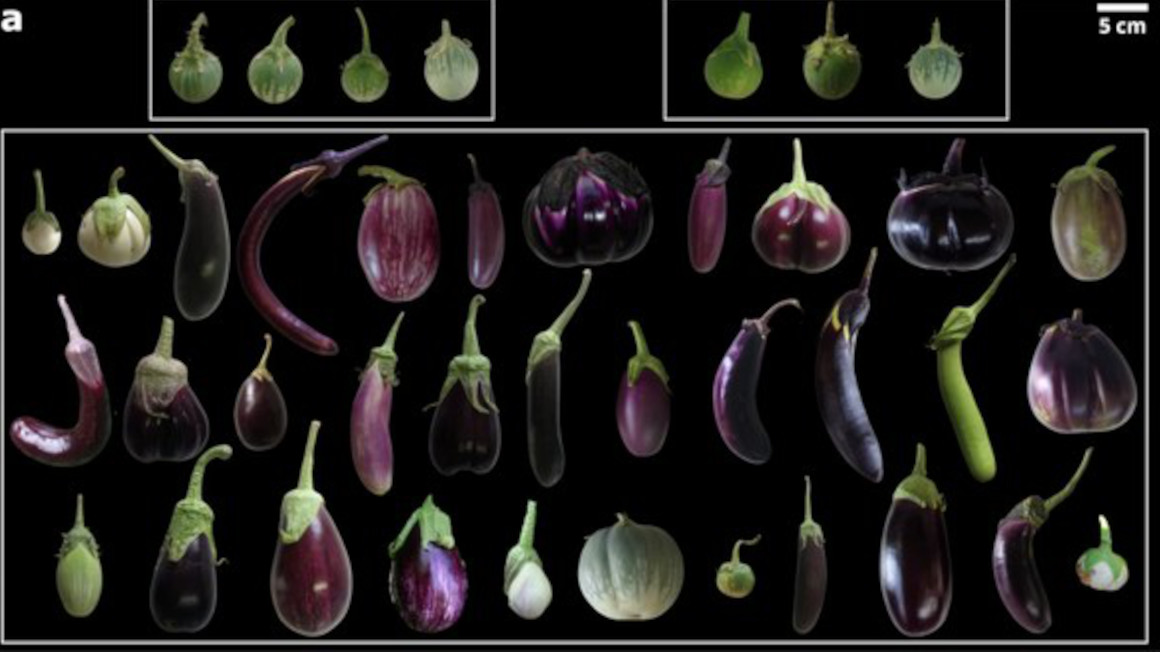Better tomatoes via genome editing
For the first time, plant researchers have succeeded in using the CRISPR-Cas genome editing tool to breed a new crop from a wild tomato plant within just one generation.

For thousands of years people have been breeding crops such as wheat, maize and tomatoes. When doing so, farmers and breeders have been particularly concerned with increasing crop yields. However, targeted breeding has resulted in the loss of other useful traits and genetic diversity, and modern cultivated plants are often more susceptible to disease and have a reduced vitamin and nutrient content. The problem: Characteristics that are determined by the interplay of numerous genes cannot be restored by classical breeding. An international team of scientists, including researchers from Münster, Germany, has now succeeded for the first time in using the CRISPR-Cas genome editing tool to produce several crop traits simultaneously within just one generation from a "wild tomato" - without destroying the desired original genetic traits of the wild plant.
Starting domestication all over again
According to the report by the plant researchers in the scientific journal "Nature Biotechnology", the starting plant was the wild tomato Solanum pimpinellifolium from South America, the ancestor of today's cultivated tomatoes. Although the wild plant only offers pea-sized fruits and produces a low yield, its fruits are more aromatic and contain more lycopene - the antioxidant is considered to be very healthy. "This new method allows us to start from scratch and begin a new domestication process all over again. We can preserve the genetic potential and the particularly valuable properties of wild plants and, at the same time, produce the desired features of modern crops in a very short time," says biologist Jörg Kudla from the University of Münster, who was involved in the study with his team. The researchers from Münster were funded by the German Federal Ministry of Education and Research (BMBF).
The newly cultivated tomato (right) differs clearly from the wild plant (left):
- more flowers and thus more fruits
- the fruits are larger and egg-shaped instead of round
- contains more lycopene (recognizable by the deeper red coloration of the juice)
- the plant has a more compact growth

Larger and healthier fruits
Using the "Multiplex-CRISPR-Cas9" method, the scientists specifically switched off certain genes. Afterwards, they selected suitable mother plants from the genetically modified plants. The researchers then tested their offspring of those plants for their externally visible characteristics and then analysed them. The researchers were able to achieve the following changes compared to wild tomatoes: The fruits were now three times as big as before - about the size of a cocktail tomato. In addition, the number of fruits increased tenfold, their shape was more oval than that of the round wild fruit, and overall the plants grew more compactly.
Of note: the newly bred tomatoes contain twice as much lycopene as the wild original species and even more than five times as much as conventional cocktail tomatoes. "Lycopene can help to prevent cancer and cardiovascular diseases. So, from a health point of view, the tomato we have created probably has an additional value in comparison with conventional cultivated tomatoes and other vegetables which only contain lycopene in very limited quantities," Kudla emphasises. Until now, breeding attempts to increase the lycopene content of cultivated tomatoes have been mostly unsuccessful.
Genome editing opens up new possibilities
Kudla's conclusion: “With the help of modern genome editing, we can use the advantages of the wild plants (…). In brief, molecular ‘de novo domestication’ offers enormous potential – also for producing new, desirable properties.” Moreover, Kudla adds, it will now be possible, for instance, to take plants which have so far not been used by humans and, by means of a targeted increase in the size of their fruits, transform them into new crop plants.
jmr


